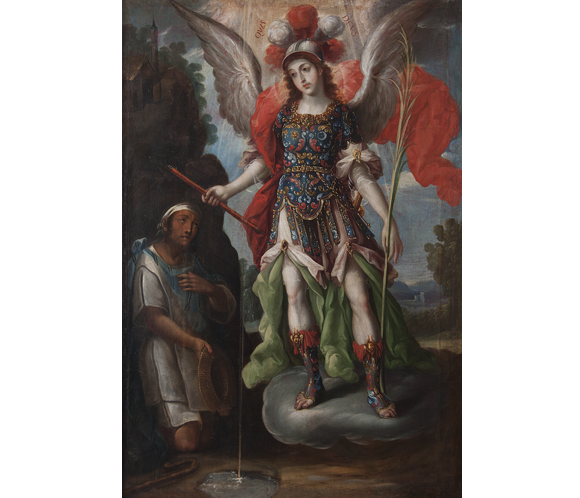The Devotional Landscape and the Indian as Good Christian

The ability of Indians to become good Christians was a subject of debate from the time of the discovery of the New World. By the seventeenth century accounts of their capacity to embrace the faith began to be codified in earnest.
Some stories described miracles experienced by Indians soon after the conquest and their natural inclination to partake of the sacraments. Devotions sprang up throughout Spanish America, with hardly a city, town, or village unable to claim a miracle-working image. The Virgin Mary was one of the favorite devotions imported to Mexico and Peru. Known by different names—including Guadalupe, Remedios, Candelaria, Cocharchas, and Cayma—she was often associated with a specific region, becoming the object of local pride and veneration. Many of the origin stories of these devotions included the figure of an Indian as a maker of the religious effigy or acting as witness to a miraculous apparition of the Virgin or a saint. For example, the fame attained by the Virgin of Guadalupe in Mexico (who, according to tradition, appeared to the Indian Juan Diego in 1531), was a powerful reason to boast of the region's providential destiny.
Images of pious Indians stood at one end of the devotional spectrum. On the other were the so-called heathen Indians, barbaric nations that dwelled at the colony's frontiers and were thought to be in the devil's thrall. Their conversion justified the Spanish presence in the New World until the end of the colonial period and gave rise to an array of works documenting the atrocities of the still untamed group.
Exhibition Home Page Indian Festivals and Sacred Rituals
Image: The Apparition of San Miguel del Milagro to Diego Lázaro, Mexico, first half of the 18th century; oil on canvas; 66 x 46 in. (170.5 x 118 cm). Museo Universitario Casa de los Muñecos, Benemérita Universidad Autónoma de Puebla, Mexico.